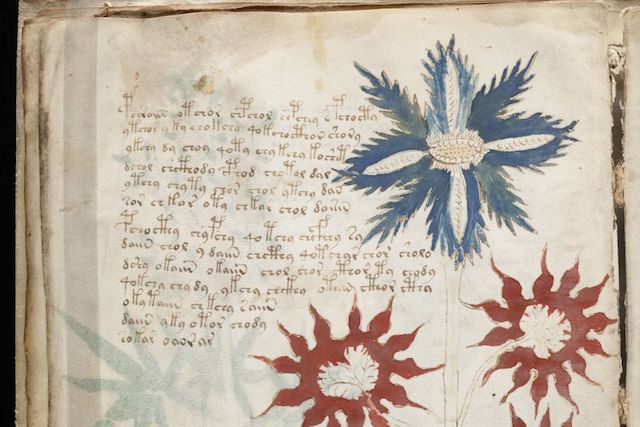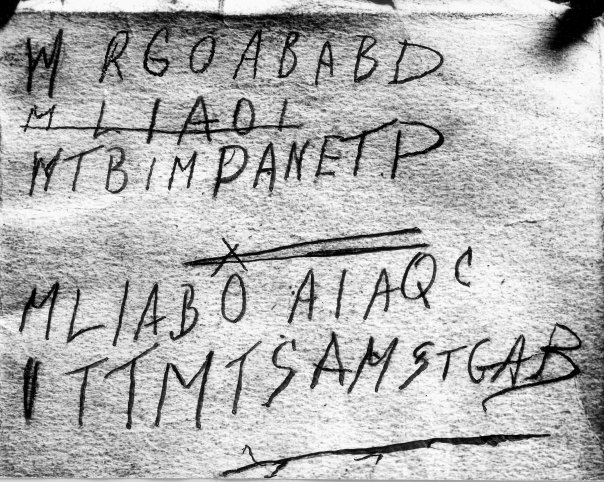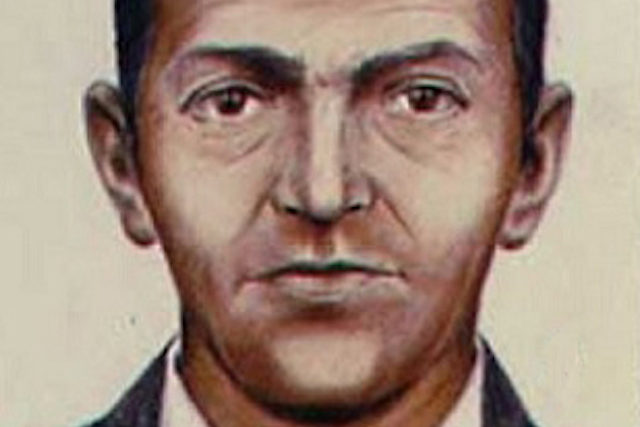There’s an old saying that goes, “If I knew then what I know now.” It basically means with age comes wisdom. Ironically, this applies to human nature but not history, as history is much more of an “if I knew now what I knew then” situation.
History presents us with countless puzzles and mysteries; things our forefathers must have known that leave us scratching our heads today. Not that we’re giving up on trying to figure out the past, it’s just that some of these puzzles are harder to solve than others.
10. The Voynich Manuscript

The Voynich Manuscript is a document that was written sometime in the early 1400s. The language used is completely unknown, but it does seem to be a code. And a code means it could arguably be deciphered and translated.
The book was purchased in 1912 by a book dealer, and immediately the task of deciphering the manuscript began. Now, over 100 years later, the work continues with little genuine progress.
In 2017, it was reported that the mystery had finally been solved and the text had been translated and all was well in the world. That was until someone else checked the work and determined that the newly deciphered text made no sense whatsoever. One of the keys to cracking any codes is making sure that the translated message has meaning. If it doesn’t, then you didn’t really crack that code.
The manuscript has been a compelling mystery for all this time because there’s more to it than coded words. Illustrations of naked women, alien creatures, and zodiac symbols were also included. Code breakers from both world wars have tried their hand at solving it to no avail. In fact, dozens if not hundreds have tried over the years with no meaningful or accepted translation being produced.
9. The Beale Ciphers
One of the most appealing ideas from all of history is the map to buried treasure. How great would it be to find the key to hidden riches just waiting around for the taking? That’s the draw of the Beale Ciphers, a set of three coded texts said to lead to a treasure of gold and silver worth millions.
Of the three texts, one has been solved while the other two are a mystery. The first unsolved text details the location of the treasure. The third details the identities of those who own the treasure. But the one solved text is the one that details the nature of the treasure, which is how anyone knows it exists in the first place.
According to the story, a man named Thomas Beale buried some treasure in Virginia back in the 1820s. He gave the coded texts to an innkeeper and then vanished, never to be seen again. The innkeeper supposedly kept the sealed box of ciphers for decades before finally opening it to see what was inside. Before he died, he gave them to a friend.
Unsuccessful in deciphering the code himself, this friend published all the texts in a pamphlet in the 1880s. That opened the mystery up to anyone who might have the skill to figure it out.
The ciphers are readily available online and if you can solve it, and the treasure is real, you stand to make $60 million or so in the form of several thousand pounds of gold and silver, plus over $1 million in jewels.
Just know that many people have tried and failed over the last century, including those who enlisted the help of psychics to get the job done.
8. The Shugborough Inscription

If the letters O U O S V A V V mean anything to you, then you may be able to solve the Shugborough Inscription. The letters were inscribed on a monument in Staffordshire, England. It’s a small monument in a quaint little garden on the grounds of Shugborough Hall, which is a tourist attraction of some historic significance.
The inscription was added to the monument years after it was built. It’s bordered by the letters D and M and is inscribed below a copy of a painting called the Shepherds of Arcadia.
Some believe that placement of the inscription and the details of the life of the painter that created the original work under which the inscription appears point to Knights Templar. As in, people believe this inscription may lead you to the Holy Grail.
As short as the inscription is, numerous code breakers have tried to figure it out over the years with no luck. The link to the holy grail rests entirely on a 1982 book called “The Holy Blood and the Holy Grail” which draws a link between painter Nicholas Poussin and Jesus himself. The idea is that Jesus married Mary Magdalene, they had kids, and his bloodline became the French Merovingian Dynasty. It’s based on zero evidence whatsoever.
Despite the utter fiction at the core of the belief, many people have tried to find the link to the vague inscription and the Knights Templar and the grail. While there may be no reason to believe this relates to the grail, the fact remains the inscription itself, if it has meaning, has yet to be solved.
7. The Tamam Shud Case

A mystery fit for a big budget movie, the Tamam Shud case has baffled would-be crime solvers since 1948. A man was discovered on a beach in Australia. He was dressed in a suit and leaning against a wall with his feet crossed. A half-smoked cigarette had fallen from his mouth. He was dead. He was also never identified.
An initial exam determined heart failure may have killed him with a possible poisoning being the reason. The autopsy discovered an enlarged spleen and liver. His stomach contained a pastry and blood. All the evidence suggested poison, except that no poison was discovered in tests.
Also of note was the fact the man had remarkably well formed calf muscles but oddly pointed feet. It was suspected that he may have had a habit of walking in high-heeled shoes. Or he danced ballet.
The man had no ID on him. Just a ticket to the beach where he was found, some gum and a pack of smokes. They traced him back to a suitcase at a train station that had no evidence of his identity in it, either. But four months after he died, another examination found a small pocket sewn into the waist of his pants. In that pack was a scrap of paper with the words “tamam shud“ scrawled on them in a fancy typeset. Persian for “finished.” Nothing more.
The words were from a book of poetry. Law enforcement even found the exact book. Indentations in the paper of the book proved to be from coded text. A last message from the deceased, perhaps. But it has never been decoded, and the identity of the man has never been determined.
DNA analysis of hair is ongoing and attempts to finally identify the man have kept investigators busy for over half a century.
6. Hinterkaifeck Murders

In 1922, on a small farm in Bavaria about 40 miles from Munich, six people were murdered. Viktoria Gabriel, her elderly parents, her two children and the maid were all discovered when neighbors grew concerned that one of the children had not been attending school and the whole family missed church.
The four oldest family members were found in the barn. They had been killed with a mattock, a tool similar to a pickax. Inside the house, the body of the youngest child was found along with the maid. It had been her first day on the job. The previous maid had quit, and the story was that she had thought the farm was haunted after hearing sounds in the attic.
Later evidence indicated that whoever committed the crimes had lived in the house, possibly hiding in the attic for some time. Because so many people had been to the crime scene between when the bodies were found and when an investigation began, evidence may have been lost. At least four days passed between the murders and the discovery of the bodies.
Each victim had not just been killed, they had been brutally assaulted. The killer bludgeoned some of them many times. The daughter didn’t die right away and likely survived hours with her injuries. And, bafflingly, the family dog and farm animals were not only left alone, someone took care of them for several days.
Nothing was stolen, and there was a large sum of money still in the house.
Although many suspects have been arrested over the years, no one was ever found guilty of the crime. As late as 2007, the case was still being investigated with little new evidence to rely on.
5. DB Cooper

The FBI finally ended their investigation into the disappearance of DB Cooper in the year 2016. That was 45 years after he hijacked a plane and vanished with $200,000. Cooper parachuted from the plane with the money and was never seen again.
DB Cooper was an alias. No one really knows who the man was or what became with his money which, today, would be worth over $1 million. Books and movies have been written about the story. Some theories suggested he lived and others that he died. Some people think the money is still out in the wilds somewhere; a boy found $5,800 worth of it in the Columbia River in 1980.
As late as 2020 people have been discovering new evidence and leads in the case. Not big ones, of course, but people are still curious about the fate of the mysterious and brazen thief.
4. Flannan Isles Lighthouse

In the year 1900 there were three lighthouse keepers on Flannan Isles just before Christmas. And then there were not. No trace of the men was ever discovered, they were never seen again. There was also a total lack of evidence of what may have happened. If they had walked off the job, if they had drowned, if they were murdered, nothing indicated any answers.
Over 100 years later and people are still trying to solve the mystery of what happened. One theory of the incident is that nature got the best of the men. Two of the lighthouse keepers were cited for improperly storing gear. They may have headed out in a storm to make sure everything was secure. A wave could have hit and swept all the men away.
That’s just a theory, of course, and certainly plausible. The problem is, with no bodies, it’s always going to remain a theory.
Other stories have circulated that investigators found a half eaten meal, and a toppled chair on the scene, indicating perhaps foul play. Those stories were circulated a couple years after the fact, however.
3. What Jesus Looked Like

Few things have caused more debate over the last few hundred years in religious circles as to what exactly Jesus may have looked like. For most of the Western world, he’s been depicted as a white man with a beard for many years. This has been challenged many times by historians and religious scholars who are quick to point out that Jesus was not from a part of the world where Caucasians were very common.
Numerous people and groups have tried to answer the question. Italian police used forensic technology to determine what Jesus might look like based on the Shroud of Turin. Others have used clues from the Bible to ascertain that he would have had skin of a darker hue. Richard Neave made a composite face of what a man in the part of the world where Jesus came from may have looked like at that time. He never said it was Jesus, but perhaps typical of what someone like him may have looked like.
Much of this is in contrast to artwork, which has long depicted Jesus as a pale-skinned man with blue eyed. There is, of course, no way to really know exactly what the man looked like, and speculation will probably continue forever.
2. Machu Picchu

Recognized as one of the Seven Wonders of the Modern World, Machu Picchu is the most famous historical site in Peru. It was built over 500 years ago atop a mountain, and no mortar was used to hold the stones together. All signs indicate it was a great city of the Inca Empire. Except no one is really sure what it was for.
There are competing theories about what the site was used for. Some suggest it was just what it appears to be, just a city. Others that it was a resort for royalty. Other theories posit that it was a holy site for pilgrimages, or a temple. One archaeologist even suggested that Incas built it to honor the land. And, of course, there’s the theory that it was built by aliens.
The site covers a plot of land that’s about 116 square miles. Whatever it was used for, the Incas made sure you wouldn’t lose track of it. Like other ancient marvels, it was made from tons of rock all assembled without the help of modern technology or even wheels.
The Incas never mentioned Machu Picchu in their writings, which is why there’s still so much mystery surrounding it. Archaeological evidence from the site offers few clues as to the purpose of the city, either. About 200 skeletons were found on site, but the city was large enough to house hundreds more so it’s perplexing that there aren’t more bodies around.
Researchers continue to investigate the site and surrounding areas in the hopes that, at some point, the purpose will become more clear.
1. Proto-Elamite

There are roughly 573 dead languages that we are currently aware of. No one studies them or speaks them and many of them are lost to history. Of all the dead languages, few offer up a puzzle as enticing as Proto-Elamite. It is the oldest, undeciphered language in the world.
Dating back to the 4th millennium BC, Proto-Elamite is still being studied at the Louvre, in France. Over 160 clay tablets from Iran are covered in the language, but so far the nature of what is written there is a mystery. Researchers continue to scan the words in the hopes that, by putting them all online, researchers around the world will be able to pitch in and help solve their meaning.
Evidence suggests that while Elamite, a later and vaguely similar language, was widespread in the middle east for many generations, Proto-Elamite was very short lived and may have only survived a couple of generations before dying out. But how and why that happened is completely unknown, as is the nature of any texts written in it. But as the oldest language that has yet to be understood, it represents a major stepping stone in the history of language.